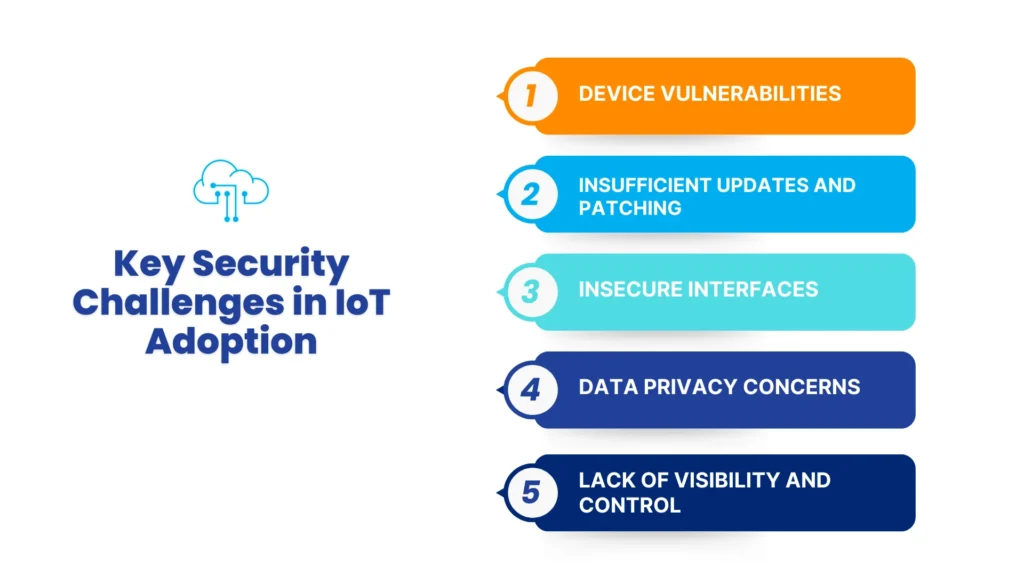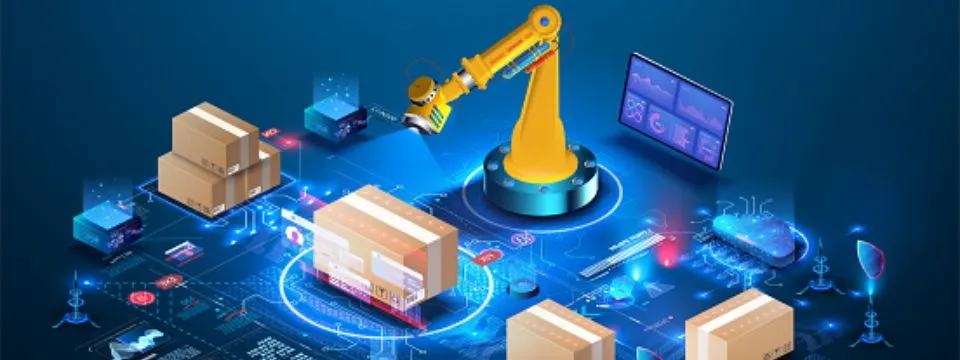Navigating Security Challenges in Internet of Things (IoT) Solutions
Author: Laila Meraj
6 Feb, 2025
The Internet of Things (IoT) has revolutionized the way we interact with technology, offering unparalleled convenience and efficiency across various sectors. However, as the adoption of IoT solutions accelerates, security has emerged as the most significant challenge hindering its widespread implementation. This blog delves into the multifaceted security issues associated with IoT adoption, emphasizing the critical need for strong security measures and how companies like Xorbix Technologies can play a pivotal role in addressing these challenges.
The Growing Landscape of IoT
The IoT ecosystem comprises billions of interconnected devices, from smart home appliances to industrial machinery. According to estimates by Balbix, the number of IoT devices is expected to reach 25 billion by 2025, leading to an expanded attack surface for cyber threats. As organizations increasingly rely on Internet of Things solutions for operational efficiency and data analytics, the urgency to address security vulnerabilities becomes paramount.
The Importance of Security in IoT
Security is not just an afterthought in IoT; it is a foundational element that must be integrated into every stage of development. Many Internet of Things development companies prioritize functionality over security, leaving devices vulnerable to attacks. This oversight can lead to unauthorized access, data breaches, and even device hijacking. Consequently, understanding the security landscape is crucial for organizations looking to implement IoT solutions effectively.
Key Security Challenges in IoT Adoption

1. Device Vulnerabilities
IoT devices often come with inherent vulnerabilities due to inadequate testing and lack of strong security protocols. Many devices are shipped with default passwords that users neglect to change, making them easy targets for hackers. Furthermore, the complexity involved in managing numerous devices across different platforms complicates security efforts.
2. Insufficient Updates and Patching
A significant challenge faced by businesses is ensuring that devices receive regular updates and patches. Many IoT devices remain unpatched for extended periods due to manufacturers’ failure to provide timely updates or users’ inability to apply them. This leaves devices susceptible to exploitation through known vulnerabilities.
3. Insecure Interfaces
The interfaces through which IoT devices communicate, such as APIs, are often inadequately secured. Weak authentication mechanisms and insufficient encryption can lead to unauthorized access and data breaches. As businesses increasingly integrate IoT solutions into their operations, securing these interfaces becomes critical.
4. Data Privacy Concerns
The vast amounts of data generated by IoT devices raise significant privacy issues. Without proper safeguards, sensitive information can be exposed or misused, leading to severe consequences for individuals and organizations alike. Companies must prioritize data protection strategies as part of their Internet of Things services.
5. Lack of Visibility and Control
IoT devices are frequently deployed outside traditional IT environments, leading to a lack of visibility and control over these assets. This phenomenon, often referred to as Shadow IoT, complicates efforts to secure networks as IT teams struggle to manage devices they are unaware of. Organizations must implement comprehensive monitoring solutions to mitigate these risks.
The Role of Xorbix Technologies in Addressing IoT Security Challenges
As an Internet of Things technologies company, Xorbix Technologies offers tailored solutions that prioritize security at every stage of IoT development. By integrating top security measures into our IoT software development, we ensure that clients can leverage the benefits of IoT while minimizing risks.
Comprehensive Security Solutions
We provide a range of IoT development services designed to address specific security challenges:
- Vulnerability Assessments: Regular assessments help identify potential weaknesses in IoT systems before they can be exploited.
- Secure Design Practices: Incorporating security into the design phase ensures that vulnerabilities are addressed from the outset.
- Data Encryption: Implementing strong encryption protocols protects sensitive data both in transit and at rest.
- User Education: Training users on best practices for device management can significantly reduce risks associated with default credentials.
Best Practices for Enhancing IoT Security
To successfully navigate the complex landscape of IoT security, organizations should adopt several best practices:
- Implement Strong Authentication Mechanisms:
Move beyond default passwords and utilize multi-factor authentication wherever possible. - Regularly Update Devices:
Establish policies for timely updates and encourage users to apply patches promptly. - Conduct Continuous Monitoring:
Utilize advanced monitoring tools to gain visibility into device behavior and detect anomalies. - Adopt a Zero Trust Approach:
Limit access based on user roles and ensured that all devices are authenticated before being granted network access. - Engage with Experts:
Collaborate with IoT consulting firms like Xorbix Technologies, specializing in developing secure IoT solutions tailored to specific industry needs.
Future Trends in IoT Security
As the landscape continues to evolve, several trends are likely to shape the future of IoT security:
Integration with Artificial Intelligence (AI)
AI-driven analytics can enhance threat detection capabilities by identifying patterns indicative of potential attacks. By leveraging AI technologies, organizations can proactively respond to threats before they escalate.
Increased Regulation
Governments worldwide are beginning to recognize the importance of regulating IoT security standards. Compliance with these regulations will become essential for organizations looking to adopt IoT technologies responsibly.
Focus on Interoperability
As more devices enter the market, ensuring interoperability between different systems will be crucial for maintaining a secure environment. Organizations must prioritize compatibility when selecting their IoT solutions.
Conclusion
Security remains the most significant challenge in adopting Internet of Things (IoT) technologies. As we continue embracing these innovations across various sectors, prioritizing strong security measures is essential. Companies like Xorbix Technologies stand at the forefront, providing comprehensive Internet of Things consulting services designed to mitigate risks while maximizing the benefits of IoT adoption.
By focusing on secure design practices, regular updates, and user education, organizations can navigate the complexities associated with IoT security effectively. As we move forward into an increasingly connected world, investing in secure IoT solutions will not only protect businesses but also build trust among consumers.
Learn more about our related services here:




